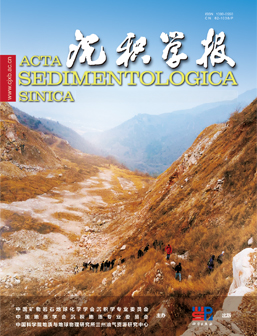Spatial Distribution Characteristics and Influencing Factors of Chemical Weathering Intensity in Sandy Land in Northeast China
doi: 10.14027/j.issn.1000-0550.2024.003
- Received Date: 2023-11-28
- Available Online: 2024-02-27
-
Key words:
- Northeast sandy land /
- chemical weathering intensity /
- Climate /
- Spatial distribution /
- Correlation analysis
Abstract: [Objective] Chemical weathering is a key geological process that regulates the long-term climate of the earth and participates in the global carbon cycle, and is particularly important for the evolution of terrestrial climate and reconstruction of paleoclimate. [Methods] In this study, 89 aeolian sand and river sand fine-grained components (<63 μm), revealed the spatial distribution characteristics of chemical weathering in the four major sandy lands in Northeast China (Hunshandake Sandy Land, Horqin Sandy Land, Songnen Sandy Land and Hulunbuir Sandy Land), and evaluated the response relationship and influencing factors of 13 weathering indexes to climatic factors (average annual temperature and average annual precipitation). [Results and Discussions] The results showed that the same chemical weathering index (e.g. CIA) showed a poor spatial distribution law and poor correlation with climatic factors in different sandy lands (the correlation coefficient was generally less than 0.4), but different weathering indicators showed a good correlation with climatic factors in different sandy lands (the correlation coefficient was generally greater than 0.6). This indicates that the sensitivity of different weathering indicators to climate varies significantly in different regions. The chemical weathering of the sandy land in Northeast China measured by different indexes is generally controlled by climatic factors, but there are still obvious differences in the correlation between the chemical weathering intensity and temperature and precipitation in different sandy lands. The chemical weathering intensity of Hunshandake Sandy Land was generally low under the influence of precipitation, which was mainly controlled by river action and monsoon precipitation. The weathering intensity in the eastern part of the sandy land is affected by precipitation, which is mainly controlled by topography, monsoon, water vapor transport and element migration, while the weathering intensity in the western part of the sandy land is affected by temperature, which is mainly affected by the topography and high annual average temperature. The southern part of the Songnen Sandy Land has a high weathering rate and is most significantly affected by precipitation, which is mainly affected by geographical location, monsoon precipitation, distribution of multiple rivers and vegetation coverage. The weathering intensity of Hulunbuir Sandy Land is at a moderate level and is relatively weak due to temperature and precipitation, which is mainly controlled by topography, wind erosion, physical weathering and vegetation coverage. [Conclusions] In general, in addition to climatic conditions, the effects of river development, topography and regional geographical characteristics on chemical weathering intensity are equally important, so it is necessary to choose carefully when using sediment chemical weathering indicators for paleoclimate reconstruction, and this study also provides a new idea for sandy land environmental management in Northeast China.
| Citation: | Spatial Distribution Characteristics and Influencing Factors of Chemical Weathering Intensity in Sandy Land in Northeast China[J]. Acta Sedimentologica Sinica. doi: 10.14027/j.issn.1000-0550.2024.003 |






 DownLoad:
DownLoad: